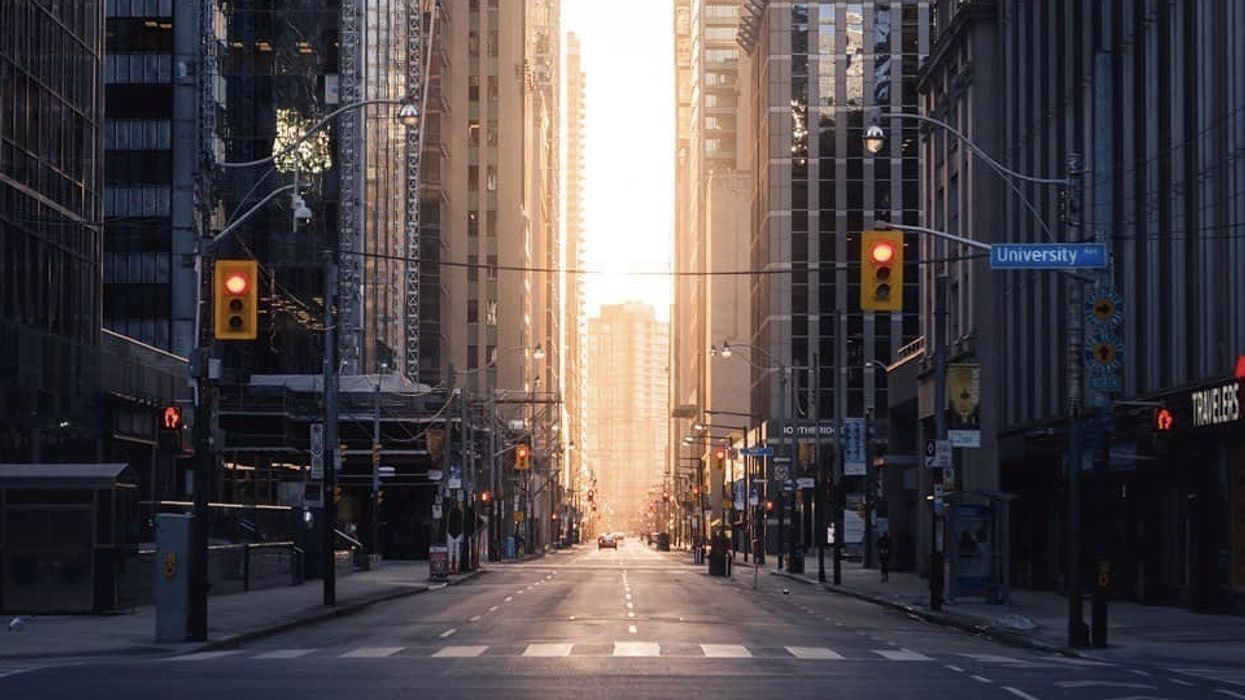Week after week, the City has announced new shutdowns, but one they continue to hold out on is the closure of city streets to cars.
Just last week, Toronto's Medical Officer of Health announced that the measures currently in place could last at least another 12 weeks. Playgrounds are closed, sports fields are shut down, off-leash dog parks are now off the table. In the effort to get people to #StayHome and to flatten the curve of COVID-19 cases, the City is coming to a virtual standstill.
RELATED: If You Need to Go Outside Try Visiting a Lesser-Known Toronto Park
One issue that remains, however, is that combined with the beautiful spring weather on its way, too many people will continue to find a way to move. And if they are not given the proper space to do so they will also continue to pose a threat to the rest of the population by collecting in spaces that are either too popular or too small to hold them.
Asking a population of millions to sit inside all day, every day is simply not a realistic expectation. If it is the expectation, this pandemic will quickly move – if it hasn't already – from a public health emergency to a mental health emergency. The already crushing economic realities being wrought by coronavirus will only stew and stir more deeply when the individuals facing them are forced to stare blankly at the outside world from behind a window. Everyone's own personal reality will become smaller and smaller until it is too difficult to stand.
There is a thin line between exile and imprisonment, and the current situation is certainly testing both sides of it. People need to be able to break out and run free from time to time, and where better to do so than on the City's expansive streets?
Currently, walking down the sidewalk can feel like some twisted game of Frogger, where the road offers the only safety from groups of people walking down the middle, or families collecting in groups. We should not need rules for using the sidewalk during this time beyond the customary ones society has already put in place (don't hog the middle, let people pass, look where you're going, not at your phone), and we don't need to with all the space right beside us – the reality of the 'open road' has perhaps never been more open in Toronto's history than it is today.
According to a mobility index from the urban mobility app Citymapper, which studies app usage and trip-planning to measure current activity in a city against a more typical usage period, Toronto is currently operating at just 15% of its normal 'moveability'. Photos across social media capture large swaths of urban landscape lingering in emptiness, whole intersections vacated, waiting for foot traffic to take over.
RELATED: GO Transit Ridership Down 90% Amid Coronavirus Pandemic
The familiar argument, of course, is that by opening streets to people it will encourage them to congregate there, effectively undoing the very policy the City is currently trying to enforce – social distancing. But the streets, unlike, say, High Park during cherry blossom season, do not offer the same general reason to escape as much as they simply offer a way to do so safely. Having a limited number of pedestrian-only roads available in each neighbourhood for people to walk, run, and move with more freedom than is currently available could help restore – and maintain – some much-needed sanity during a time of crisis.
To be clear, I'm not suggesting the entire City comes to a complete stop save for those who are willing to hoof it. Trucks still need to make deliveries, buses still need to run, people still need to go places – be it work, or for groceries, or to help a family member in need. But claiming at least some of the immense amounts of concrete Toronto has laid bare for our feet might just give us the drive we need to get through to summer.
Honk if you agree.





















